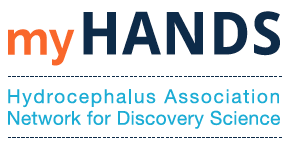Inpatient healthcare burden and variables influencing hydrocephalus-related admissions across the lifespan
The cost of hydrocephalus care
What affects the cost of hospital admissions for people with hydrocephalus? A recent paper, published in the Journal of Neurosurgery, sought to answer this question specifically for shunt-related admissions. This is the first paper to do this with data representing people with hydrocephalus of all ages, and the data revealed a number of interesting results. The authors note, however, that cost of shunt-related admissions represents only a fraction of the total costs of hydrocephalus care and that the true financial burden of hydrocephalus is much higher than the numbers presented in the study.
What they did
The authors used two large national databases to gather information from hospitals about why people were being admitted, where people were being admitted, and who was being admitted.
The big numbers
There were 36,989 shunt-related hospital admissions in 2019. These admissions cost over $2.06 billion dollars and represent 495,138 hospital days.
The smaller numbers
The authors also calculated the typical (median) cost and number of days spent in the hospital (length of stay) for each hospital admission. A typical hospital admission cost about $22,700 and people stayed in the hospital for 5 days.
The numbers, however, can change drastically when you look at specific groups. For people who were admitted and had a shunt infection that required a shunt revision, the cost of each hospital admission was about $71,300 and people stayed in the hospital for 25 days. Thankfully, admissions for shunt revisions due to an infection accounted for a small portion (1.5%) of the total number of admissions, but each admission was clearly a large burden for individual families.
Below are two graphs that show how the typical cost and length of stay varied between hospital admissions in which different shunt-related procedures occurred. The black lines on each blue bar represent a range of values (interquartile range) for individual admissions. You can see that there can be a wide range of costs associated with individual admissions and that admissions with higher costs also had longer hospital stays.

Why were people being admitted
First time shunt placements accounted for almost 54% of the admissions while shunt revisions accounted for about 27%. The remaining admissions did not include a shunt revision but did include a shunt-related procedure such as shunt removal, shunt irrigation, or valve adjustment or a procedure for shunt malfunction or infection.
Where and how were people being admitted
The databases analyzed for this study divided the United States into four regions: Northeast, Midwest, South, and West. Compared to the Northeast region, the cost per admission was lower for the Midwest and South regions. Conversely, the cost per admission was higher in the West region compared to the Northeast region. These differences in cost occurred even though the length of stay per hospital admission were similar across the four regions.
Each admission was also coded as either an emergency or an elective admission. Almost two-thirds (65.3%) of admissions were coded as an emergency. Emergency admissions were double the cost of elective admissions ($33,900 versus $15,100) and resulted in hospital stays that were four and a half times longer (9 days versus 2 days).
Who was being admitted
By age
Children accounted for 30% of hospitals admissions and 37% of total costs. Of childhood admissions, one-third of the admissions and 50% of the cost were for children under one year old. This data supports previous studies showing that very young children are at the highest risk of being admitted to the hospital.
The remaining 70% of hospital admissions were for adults highlighting the need for high quality adult care (read more about HA’s Transition Care Initiative). Forty percent of adult admissions were for people 65-years-old or older. In this group, the majority (57.1%) were diagnosed with Normal Pressure Hydrocephalus (NPH).
By type of hydrocephalus
Hospitals usually document the type or cause of hydrocephalus for each admission. Out of admissions with a specific type or cause documented, people with Normal Pressure Hydrocephalus (NPH) had the highest number of admissions (18.9%) followed by people with hydrocephalus caused by a brain bleed (15.5%), this includes intraventricular hemorrhage (4.4%) but also brain bleeds that typically occur in adults (11.1%), and then tumor-related hydrocephalus (14.4%).
However, 19.1% of admissions were coded for hydrocephalus without any additional detail about the type or cause of hydrocephalus. This makes it hard to determine the true numbers for different patient groups.
By race
This study also looked at the percent of people admitted from different racial groups and how these numbers compared to those from the U.S. census data. A number of interesting results were described. First, African American, White, and people who identified with multiple races were overrepresented. This means these groups were admitted more often than you would have expected from the U.S. census data. Conversely, Asian/Pacific Islander, Hispanic, and Native American people were underrepresented.
The story becomes more complicated when the numbers are divided into different age groups. For instance, in the 65-year-old and older age group, White people and those who identified with multiple races are overrepresented. However, all of the other groups, including African American people, are underrepresented. It is not clear what is driving all of the differences. However, for the 65-year-old and older group, it is though that more White people are referred to specialists and subsequently diagnosed with NPH than other groups.
Conclusions
This is the first paper to describe shunt-related hospital admissions for people with hydrocephalus across the entire age spectrum. The paper gives us a better understanding of who is being admitted, why they are being admitted, and the associated costs. It also identified a number of discrepancies in admission rates that should be explored further and highlights the care needs of adults with hydrocephalus.
The paper was developed through a joint collaboration between the Hydrocephalus Association, Johns Hopkins University, and Rhaeos, Inc., a medical device company.
To access the full text, follow this link: https://pubmed.ncbi.nlm.nih.gov/36681977/

